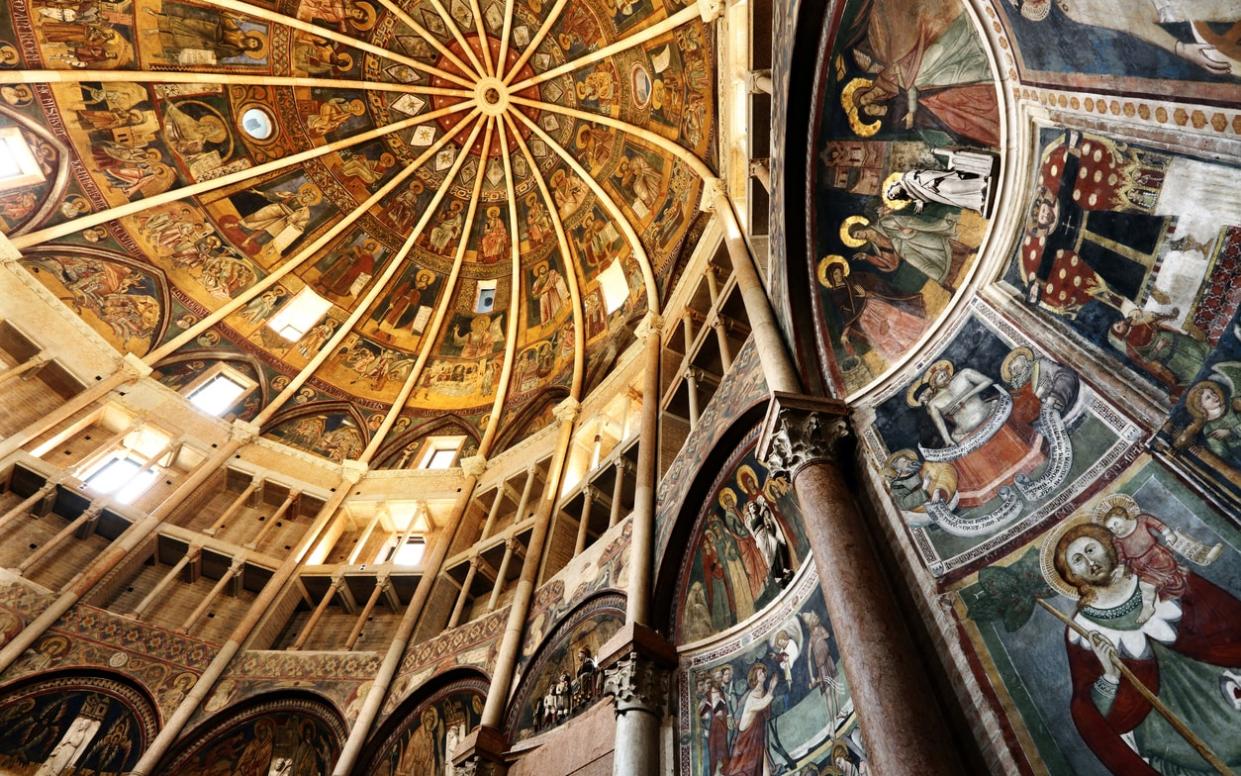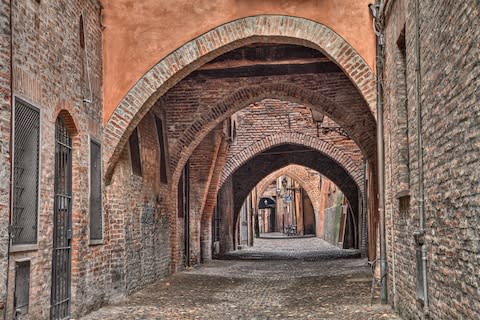The five best alternatives to overcrowded Venice

If there’s one destination that doesn’t need more tourists, it’s Venice. The Italian city like no other, a maze of canals and winding streets packed with history, fine art, good food and luxury hotels.
But it has long been a victim of its own popularity. All but around 50,000 of its residents have fled, driven out by rising rents and heaving crowds. Those that remain are resentful that their home exists only to serve the 70,000 or more tourists that arrive each day - many on cruise ships or coach tours.
“At any time after 9am, the vast majority of the people you see on the streets of Venice are tourists. And everyone’s catering to them,” Michela Scibilia, a resident, told Telegraph Travel in 2016. “Your butcher’s selling them water, your grocer’s selling them ice creams.” Locals, she says, are an afterthought. “The city’s on the verge of collapse,” she added, “and drastic decisions need to be taken. But even to tourists, Venice makes no sense without inhabitants.”

Measures have been put in place - and others mooted. Large cruise ships - over 96,000 gross tonnage - must now dock on the mainland, while a cap on the number of tourists allowed in the historic centre, and even a charge to enter St Mark’s Square, has been discussed. But the city is as crowded as ever. On Easter Sunday this year it received 125,000 visitors. That’s the same number of tourists that visit entire countries, like Bangladesh, annually.
So how can travellers help?
If you’ve never been, we can’t tell you to skip Venice entirely. It’s a unique place that everyone should see at some point in their lives. But why not go out of season? “Venice in winter is a marvellously eerie place of footsteps echoing along misty alleyways,” says Anne Hanley, our expert the the city. “It can be bitingly chilly when the wind whips down from the Dolomites, and damp — sometimes very damp indeed as acqua alta blurs the edges between pavement and canal. But it is also far less packed, blessed with magic days of blue skies, and less expensive than in high season. St Mark’s Basilica, packed and full of unseemly noise in high season, in winter is a wondrous, silent cave of shimmering gold: come early enough and you might get these acres of mosaics to yourself. La Fenice opera house still offers a packed schedule.”

If you have been before, why not try one of these unsung alternatives, elsewhere in Italy or just beyond its borders?
Four options in Italy
Verona
Just over an hour to the west of Venice lies Verona, a scandalously unappreciated alternative.
“Summer means opera in Verona, where spectacles in the Arena – the city’s Roman amphitheatre – showcase one of the most remarkable ancient buildings still surviving,” says Anne Hanley. This year’s programme begins on June 22 and includes Carmen and Aida. In fact, Verona claims to have more Roman ruins than any Italian city other than Rome (that’s because the ancients considered the city an ideal place to rest before crossing the Alps).
You’ll also find medieval churches, Renaissance art, designer shops and fine wines - the surrounding Valpolicella region rivals Chianti.

Treviso
Even closer to Venice is Treviso. Indeed, some no-frills flights to Venice actually land at this city, around 20 miles away. But there’s good reason to delay - or even cancel - the onward trip, reckons Lee Langley. It even has canals.
He explains: “Every year, tourists in their thousands come streaming off the plane and on to the shuttle buses. But Treviso is not just an airport. Two miles down the road from the terminal is a historic town with a beguiling charm all its own: Renaissance squares, palaces, richly frescoed churches, streets threaded with ancient waterways. It’s not another Venice, of course; it has no Grand Canal or San Marco. It also has no camera-clicking crowds, no tourist traps, no crazy prices, no stress.

“The centre of Treviso is a little walled city, with medieval gates, narrow, cobbled streets of arcaded rose-red brick and stone that twist and turn like dried-out water courses - which is what some of them originally were. Tiny canals run past handkerchief-sized gardens, glide beneath houses, appear at street corners. Gushing millstreams, some with black water-wheels that once had a commercial purpose, now turn lazily, playing a purely decorative role. The city once belonged to Venice, and it shows. The colonnaded Buranelli district was built for fishermen from Burano. Nearby, nudging the elegant palazzi, the covered fish market occupies its own little island, floating like a ship, filling the morning air with seafood aromas and pandemonium.”
Trieste
Follow the coastline north from Venice and you’ll eventually reach Trieste, an Italian port that bristles with life, has a fascinating history and serves - probably - the finest coffee in the country, according to Helen Pickles. “To discover the secret of a happy life head to Trieste, the Italian port tucked inside the Slovenian border,” she adds. “The Triestini embrace life with a passion that is palpable and infectious, if the chatter at evening aperitivo is anything to go by. And at the merest hint of sunshine, Triestini are off to the nearby seaside, Barcola, even in November, and even though it’s a concrete strip.
“This unsquashable humour is no doubt born of being a frontier city, variously owned or occupied by the Romans, Habsburgs, Mussolini’s regime, Germans and Allied Forces, only finally returning to Italy in 1954. The consequence is a glorious jumble of architectural and ethnic influences. In the space of 15 minutes, I came across Serbian Orthodox, Greek Orthodox and Helvetic Evangelist churches, while the city’s synagogue is one of the largest in Europe.”

Ferrara
Overlooking the Po River, halfway between Venice and the foodie paradise of Bologna, you’ll find Ferrara, a historical jewel of a city which - unlike most in Italy - is not overrun by visitors.
“Ruled for many centuries by the d'Este family, it has a beautifully preserved medieval quarter alongside a superb Renaissance one,” says Sarah Dunant. “Marking the divide is an exceedingly ostentatious half castle/half palazzo. Odd, but so interesting – rather like the city.”

The Emilia-Romagna region has a few other unsung gems, Parma and Ravenna chief among them. Of the former, Sara Evans says: “This genteel northern Italian city known for its art, music and gastronomy, and the streets look as if they've been dipped in honey. Everything one passes appears mellow and muted. Sepia-coloured stucco houses on elegant cobblestoned streets take on a vintage, old-gold feel. In the piazzas, the sun-kissed water in the fountains shimmers softly and feel warm to the touch.”
Of the latter, Anne Hanley writes: “The Unesco-listed Byzantine mosaics of Ravenna are among the wonders of Italy. They’re even more dazzling when illuminated by night. During the Mosaico di Notte season (late June to early September), four of the Adriatic city’s major sixth- to eighth-century monuments, including San Vitale and the Mausoleum of Galla Placidia, are open for guided tours on Tuesday and Friday evenings. Time your visit to coincide with the feast of Sant’Apollinare, the city’s patron saint, and you’ll see Ravenna come alive with concerts, street-food stalls, fireworks and sound-and-light shows.”
And one beyond its borders
Annecy
Venice of the North? The list of cities that have laid claim to being a milder alternative to La Serenissima is truly remarkable. It includes several beauties, such as Amsterdam, Bruges, Copenhagen, St Petersburg, Stockholm and Strasbourg, but also a fair few that should never be uttered in the same breath as Venice. Birmingham is the most famous example, but Manchester and Skipton are equally optimistic.
Svolvær and Henningsvær, fishing towns in the Lofoten archipelago of Norway, are lovely, but hardly comparable with Venice. Bourton-on-the-Water shares similarities in terms of overwhelming visitor numbers, but that little stream that runs through the Cotswolds village is hardly a match for the Grand Canal.
Other destinations described as the “Venice of the North”, by tourist boards or lazy travel journalists, solely on the basis that they sit beside a little bit of water? Amiens in France, Ålesund and Tromso in Norway, Bydgoszcz and Gdansk in Poland, Hamburg, Passau and Lubeck in Germany, Colmar in France, and… Leeds. London too has its own “Little Venice” – the junction of the Regent's Canal at Paddington.

The best alternative? We’re going with Annecy, a French lakeside city close to the border with Switzerland. Pretty canals, ornate bridges, pastel-coloured buildings: from some angles Annecy could almost pass as Venice. Almost. You’re unlikely to be pining for Italy here, though, because this endearing French city has a charm of its own. One also might be bold enough to say it has a number of advantages over Venice – chiefly its freshwater lake, beautiful mountains and lack of crowds.

